

Robert Kipniss REVERIES
Robert Kipniss: Reveries
Robert Kipniss has dedicated his life to capturing the ephemeral beauty of everyday moments – a soft sunrise, a solitary tree, a tranquil scene beyond a window ledge He creates images that beckon us into quiet reveries, where time slows, and memory and imagination gently intertwine Today, at 94 years old, Kipniss is no longer actively making art, but his legacy as one of the country’s greatest living printmakers has secured him a lasting place in the history of American art As we reflect back on his nearly 75 year career, his work stands as a testament to the enduring power of stillness – quiet moments in time, filled with emotional depth and poetic sensibility
Kipniss is renowned for his mastery of mezzotint, a printmaking process that allows for deep blacks and delicate gradations in tone The meticulous act of creating these images involves painstakingly working a copper plate, scraping and burnishing, to coax from it the rich textures and subtle tonal shifts that mimic the fleeting nature of light and shadow His mezzotints are widely regarded as some of the best examples in the medium, and we have included impressions of some of his greatest achievements in this exhibition
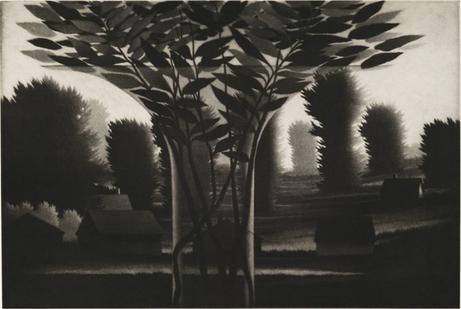
Clear vase & landscape, 1995 – an exquisite example of his compositions that merge the genres of still-life and landscape – not only graces the cover of the catalog from the New Orleans Museum of Art’s landmark 2006 exhibition, “Seen in Solitude,” but impressions of it can be found in the permanent collections of over ten major institutions, including The British Museum, The Butler Institute of American Art, and the Whitney Museum of American Art. Here, Kipniss has created a singular image that captures quiet simplicity within and without Both landscape and still-life are fully rendered
Clear vase & landscape, page 9
and complete, yet integrated through his delicate depiction of a clear glass vase, set against the luminous pastoral scene, observed through and beyond it It is a poised study in his ability to balance near and far, interior and exterior, man and nature

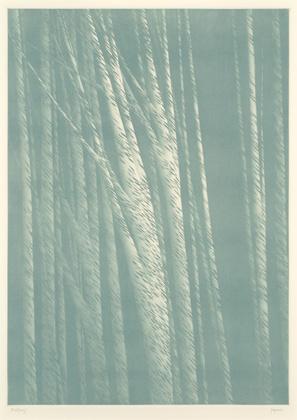

Kipniss achieves a different kind of balance and dichotomy in works like Tall trees at night, 2000, and The white forest, 2000 (also collectively represented in a dozen of the most prominent museums in the world). Here he skirts the edges of abstraction, while still rendering dense foliage in precise and painstaking detail – a task that involves carefully burnishing the space around each individual leaf shape. Kipniss creates a dreamlike midspace between the intangible and the natural world, capturing more of a sensation than a place and time Of these two compositions, Daniel Piersol, former Deputy Director of Programs at the Mississippi Museum of Art writes, “In these images the audience is no longer placed at a distance from the scene but instead is now surrounded by it Masterfully employing a range of tones, he carefully compacts space and adroitly manipulates the overall surface pattern created by the pulsating patches of light, shadow, trunk and foliage, essentially ‘camouflaging’ his images The beholder is rewarded with full recognition of the scene only after he patiently allows his eyes to adjust, as they would in a dense forest, to the dark.”
Tall trees at night page 22
Tall trees at night, trial proof page 23
The white forest page 25
In addition to his black and white mezzotints, Kipniss’s color lithographs are infused with muted warmth, softness and light. His tones are sparing, harmonious and homogenous, once again forming imagery that feels more like a memory than a precise depiction of the world around us. In the catalogue raisonné of graphic work by Karle Lunde, Lunde states, “The poetic landscapes of Robert Kipniss are dreams which lead us to discover the special unity of man and nature, a realization so poignant they arouse a sense in most viewers that they know that particular place, that once they were there” These evocations of a simple place and time – a courtyard bathed in sunlight, a rising moon beyond a hillside, a shadow cast across the side of a house are enhanced by his use of color, giving them the faded glow of moments so fleeting, they live in the delicate space where reality and reverie meet.

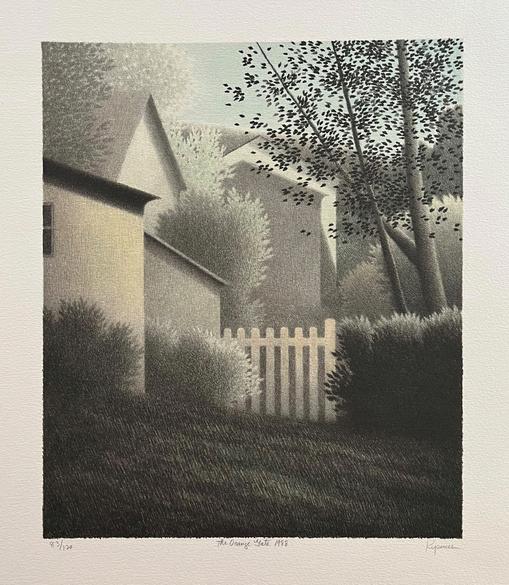
The remarkable subtlety of his color lithographs is perhaps best demonstrated in this exhibition by the 1987 print Green, green Merely a handful of verdant shades gives us the depth of the valley, the possibility of an approaching storm, and the lingering shadows of the passing day. And, where the array of green tones in some ways diminish a sense of contrast, he once again balances strength with softness, enveloping the geometric man-made shapes of houses and roofs amidst the contrasting rounded and flowing qualities of the natural landscape As is often the
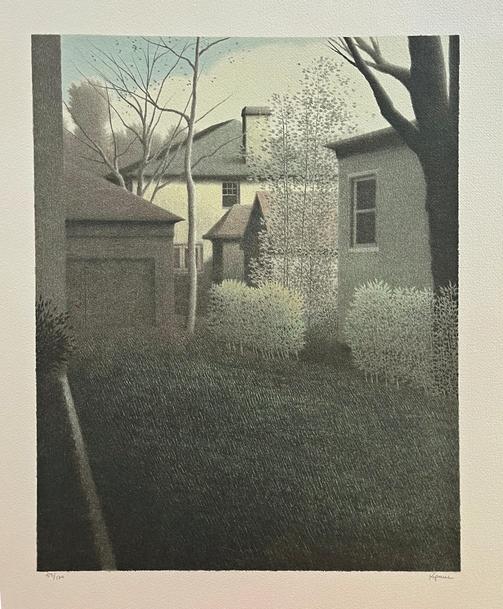
the case with his color work, he sublimates contrast with harmony in the tones, yet nevertheless emphasises it through form.
It is important to state that while Kipniss’s color choices are soft, they are still strong when properly preserved over time This is of particular note when looking at color lithographs that have entered the secondary market, as opposed to the pristine examples presented in this exhibition, which have been retained by the artist and cared for meticulously Coming to CK Contemporary directly from Kipniss’s studio, pieces like The orange gate, 1988, or Pale hedges, 1988, retain all the nuances and tonal shifts that Kipniss intended nearly forty years ago when these were printed
Throughout the many decades of Kipniss’s prolific career, his work has possessed a quiet universality that lures novice collectors as readily as major museum curators. In the last seventy five years his mezzotints, lithographs, paintings, drawings, and copper plates have been added to the collections of over 175 major public institutions, bridging the gap between popular appeal and scholarly acclaim. It is this shared regard, rooted in adoration for his works’ understated elegance and universal truths, as much as veneration of their technical mastery, that has united diverse audiences in a collective reverence for his art’s enduring appeal We are proud to have collaborated with the artist in curating this exemplary collection of mezzotints, lithographs, and paintings, that serve to showcase why the understated compositions of Robert Kipniss have captivated such a sweeping and discerning cross section of the art world Each impeccably executed work, a reminder of the profound beauty residing in life’s simplest moments – moments that, like reveries, drift softly through time, leaving an indelible mark on all those they reach.
Lauren Ellis CK Contemporary, 2025
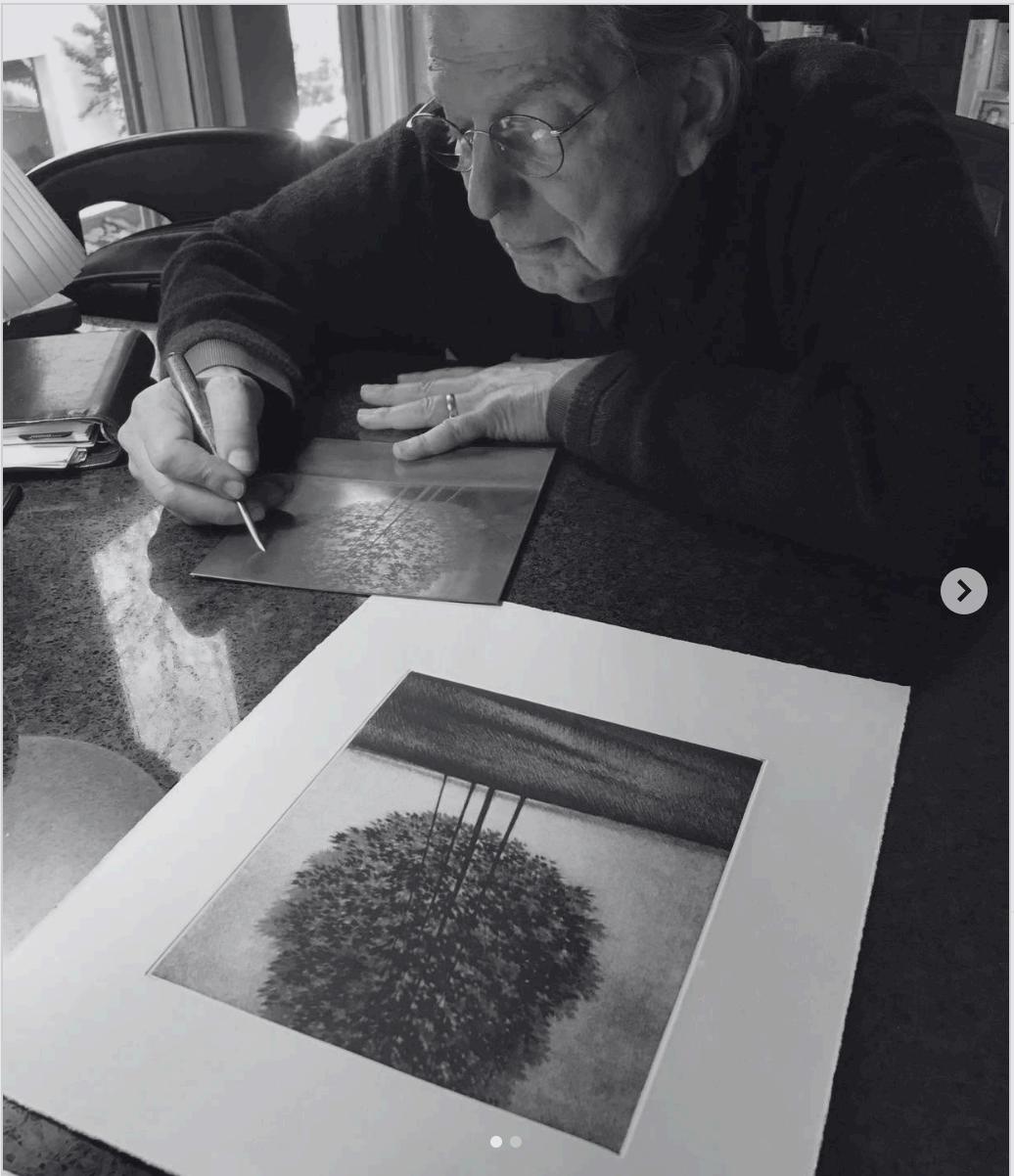
MEZZOTINTS AND DRYPOINTS
Mezzotint is a printmaking technique known for its ability to produce rich tonal qualities and subtle gradations of light and dark The process begins with preparing a copper or steel plate, which is entirely roughened or "rocked" using a tool called a rocker, with tiny teeth that indent the surface This textured surface can hold ink and generate deep black tones To create lighter areas, the artist smooths or burnishes specific parts of the textured surface, removing or reducing the burrs in those regions to hold less ink The entire plate is then evenly inked with a roller or cloth, and excess ink is wiped away This selective inking results in the desired tonal variation in the final image The plate is then pressed onto dampened paper using a printing press, transferring the ink and creating the print The end result features velvety blacks and delicate gradations, making mezzotint particularly valued for its striking chiaroscuro effects
While mezzotint and drypoint are both intaglio printmaking techniques, they differ significantly in their process and visual effects Drypoint involves directly incising lines into a metal plate, using a sharp stylus. This direct act of “drawing” on the metal results in bold, linear detail, while mezzotint is prized for its more tonal and painterly qualities.

A note about titles: As an ode to the understated nature of his images, Kipniss has chosen a specific and unique way to format his titles - The first word is capitalized, and any subsequent words are lower case, unless a proper noun; “and” is replaced by an ampersand, and “with” is shortened to “w/”

Spring evening (15/20), 2017
937 x 1387 inches
Mezzotint

Clear vase & landscape (Proof 5), 1995
937 x 14 inches
*See public collection inclusions, in appendix
Mezzotint
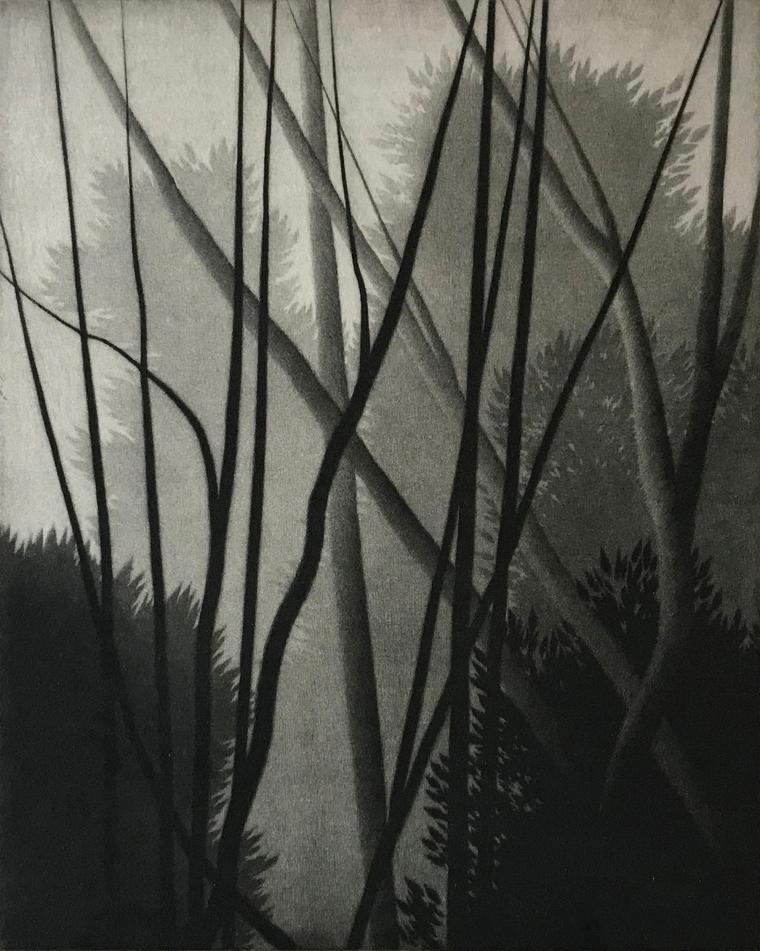
Trees & trees (13/50), 1997
Mezzotint 11625 x 9375 inches
*See public collection inclusions, in appendix
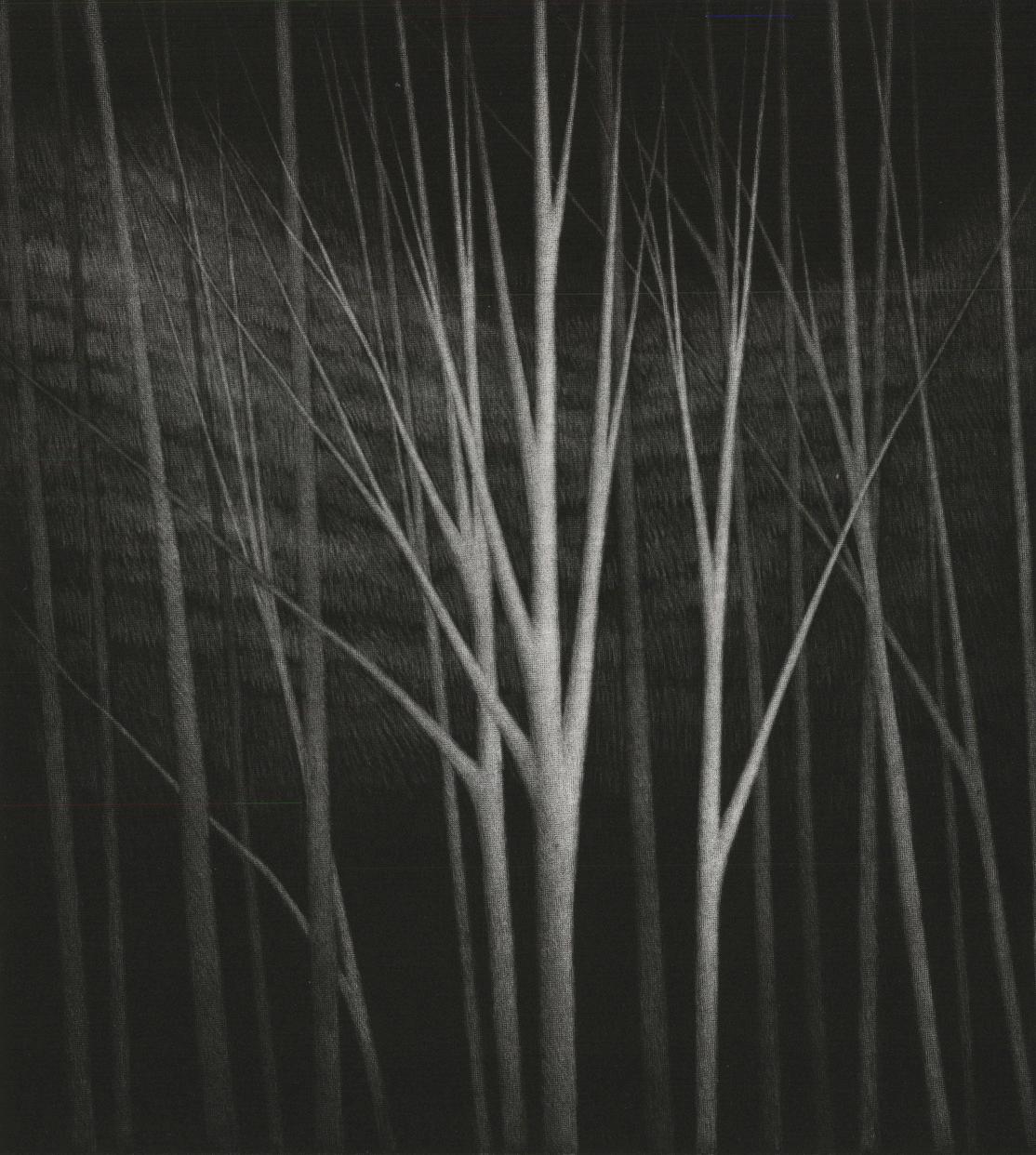
7875 x 7 inches
Memories (Proof vii/vii), 2013
Mezzotint

925 x 10375 inches
*See public collection inclusions, in appendix
Nocturne I (51/75), 1991
Mezzotint

Moonrise & sunset (29/30), 2013
775 x 7 inches
*See public collection inclusions, in appendix
Mezzotint
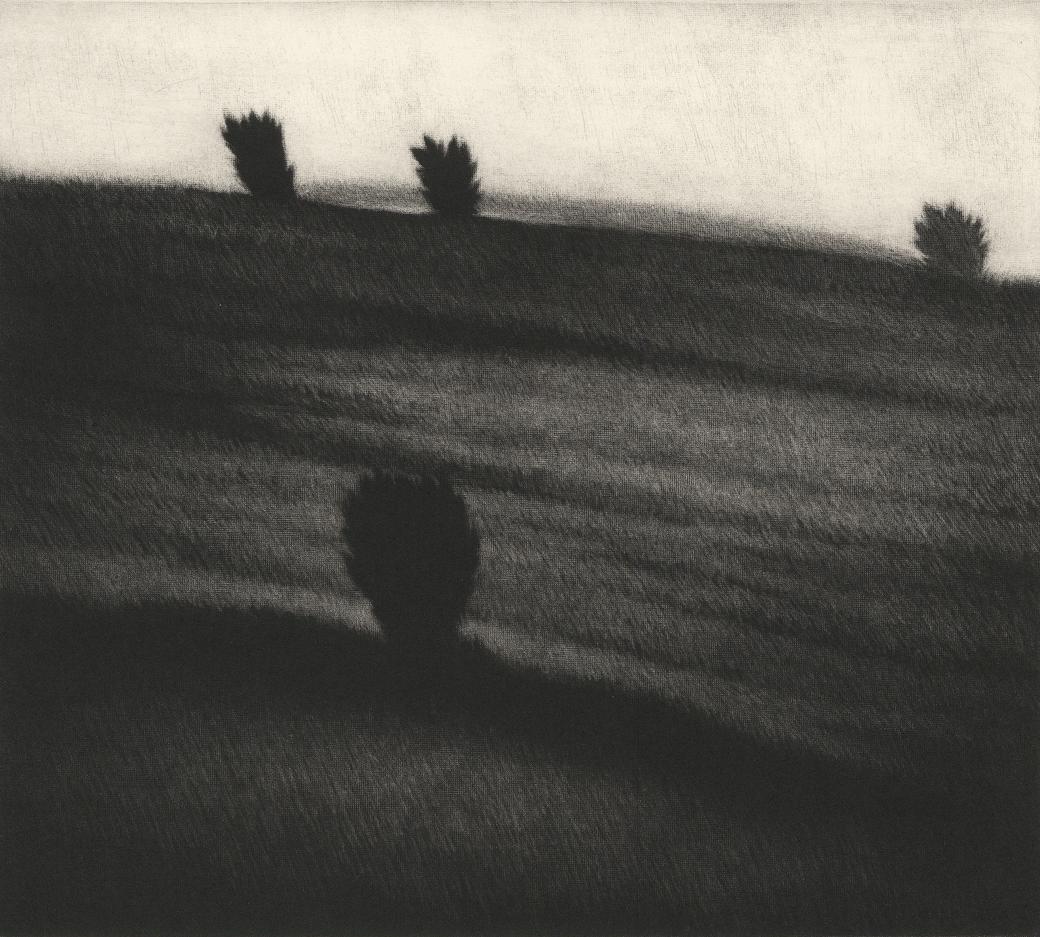
Crest w/ trees (19/20), 2019
Mezzotint
6875 x 7625 inches

14 x 105 inches
Window w/ curtain & tree (17/20), 2016
Mezzotint
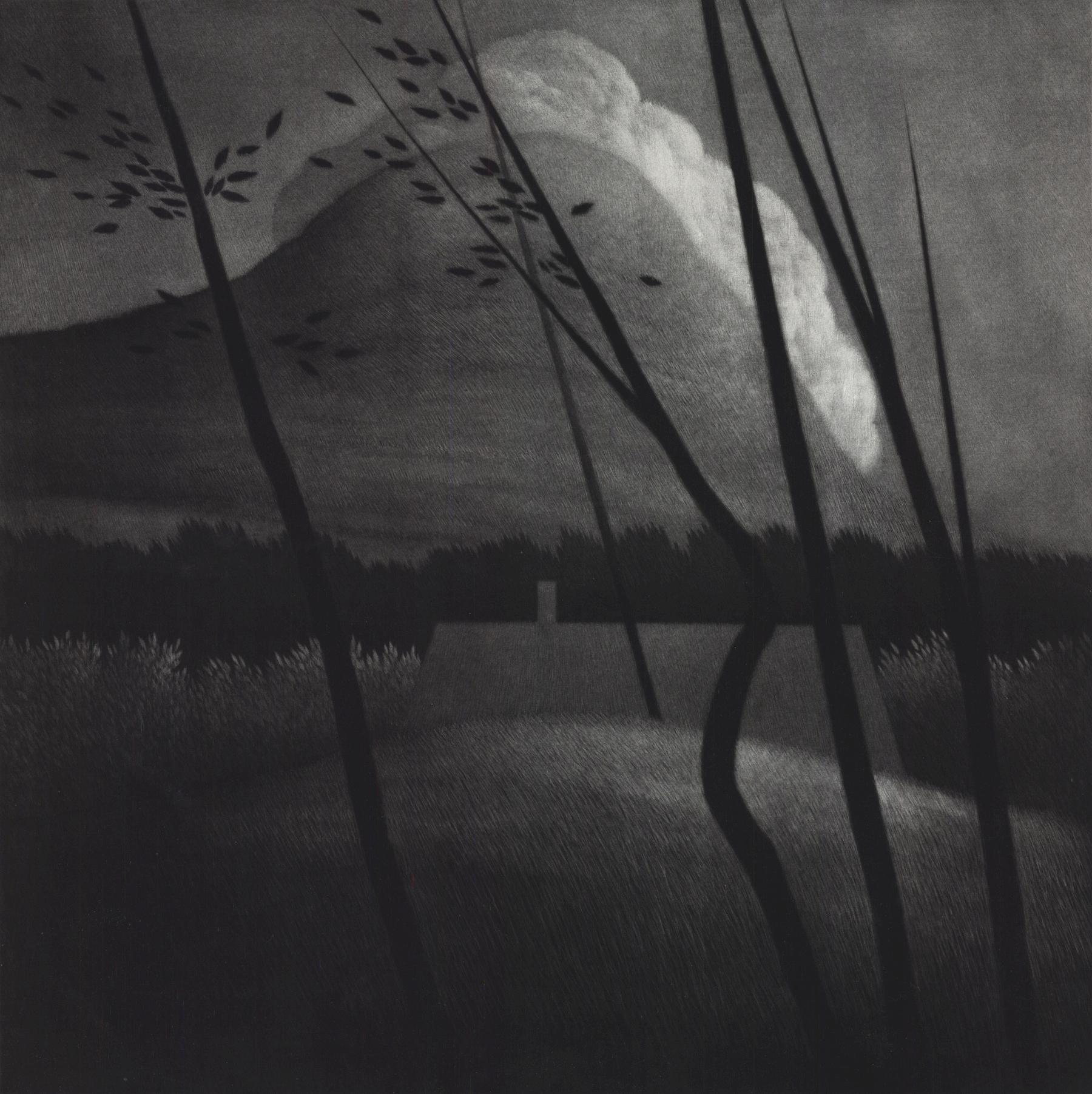
195 x 195 inches
*See public collection inclusions, in appendix
Camelback mountain & cloud (16/60), 2008
Mezzotint

White mountain & rooftop (16/18), 2020
975 x 75 inches
Mezzotint
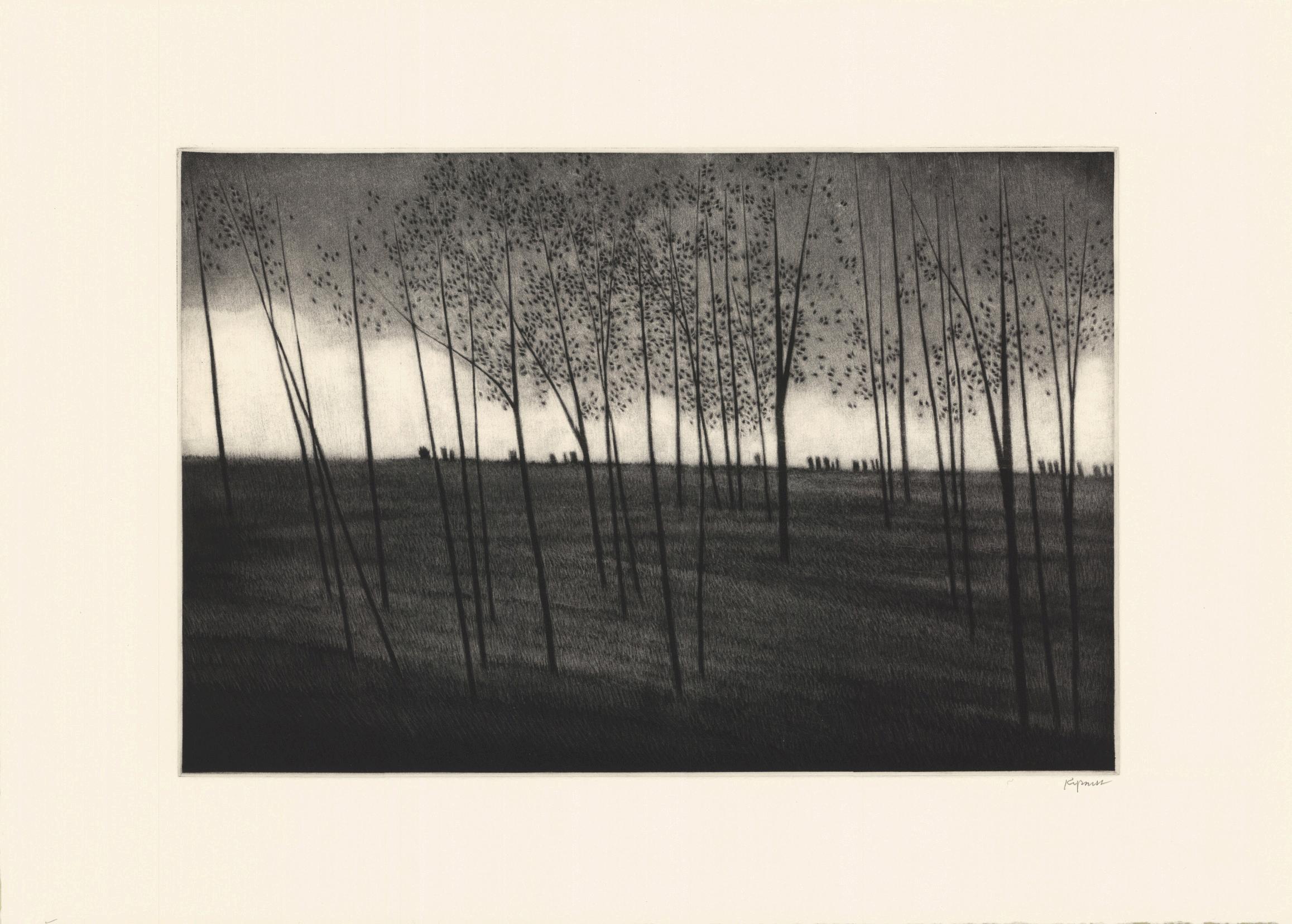
Passing storm or Lifting storm (10/25), 2018
925 x 14 inches
Mezzotint
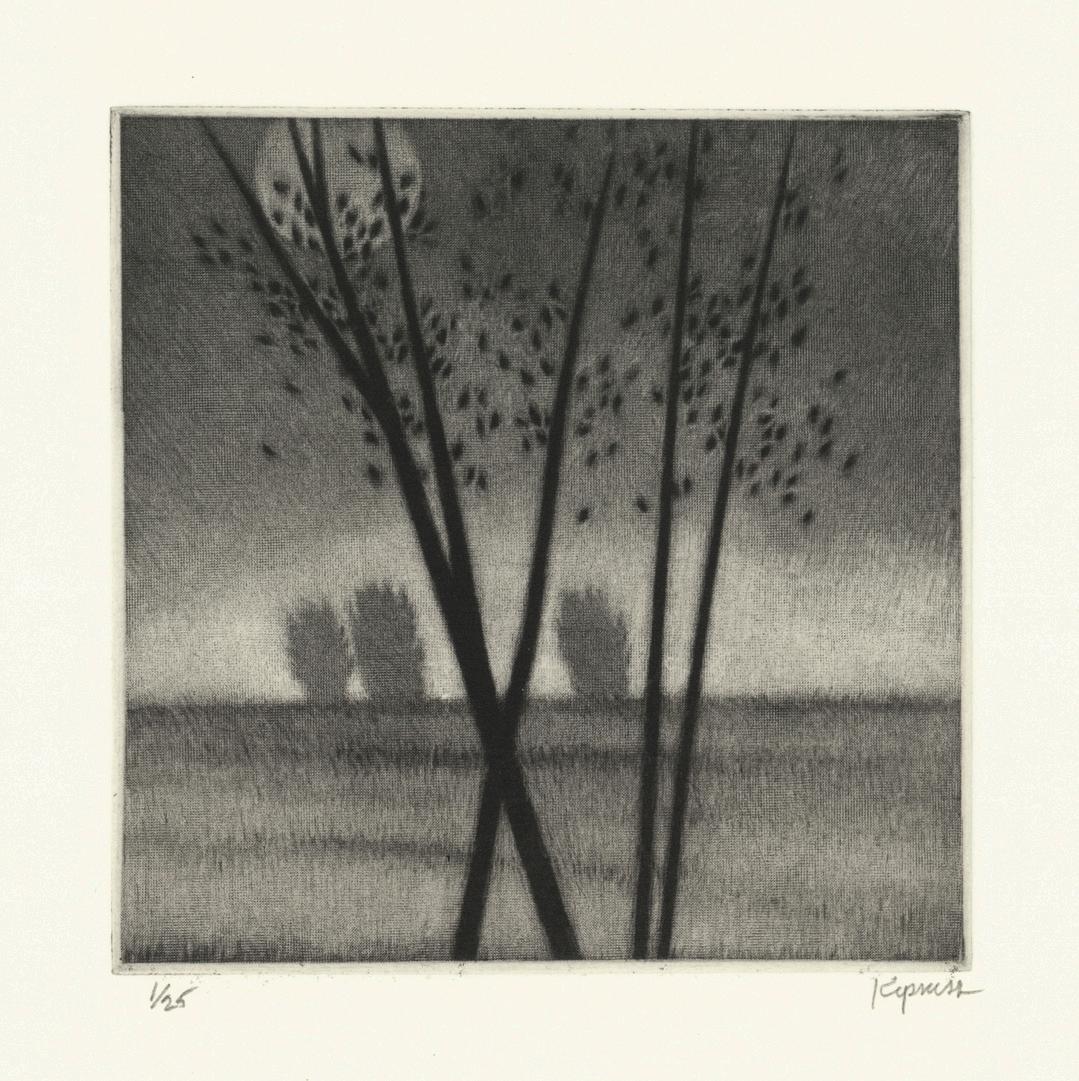
Moon at morning (23/25), 2014
4 25 x 4 25 inches
Mezzotint
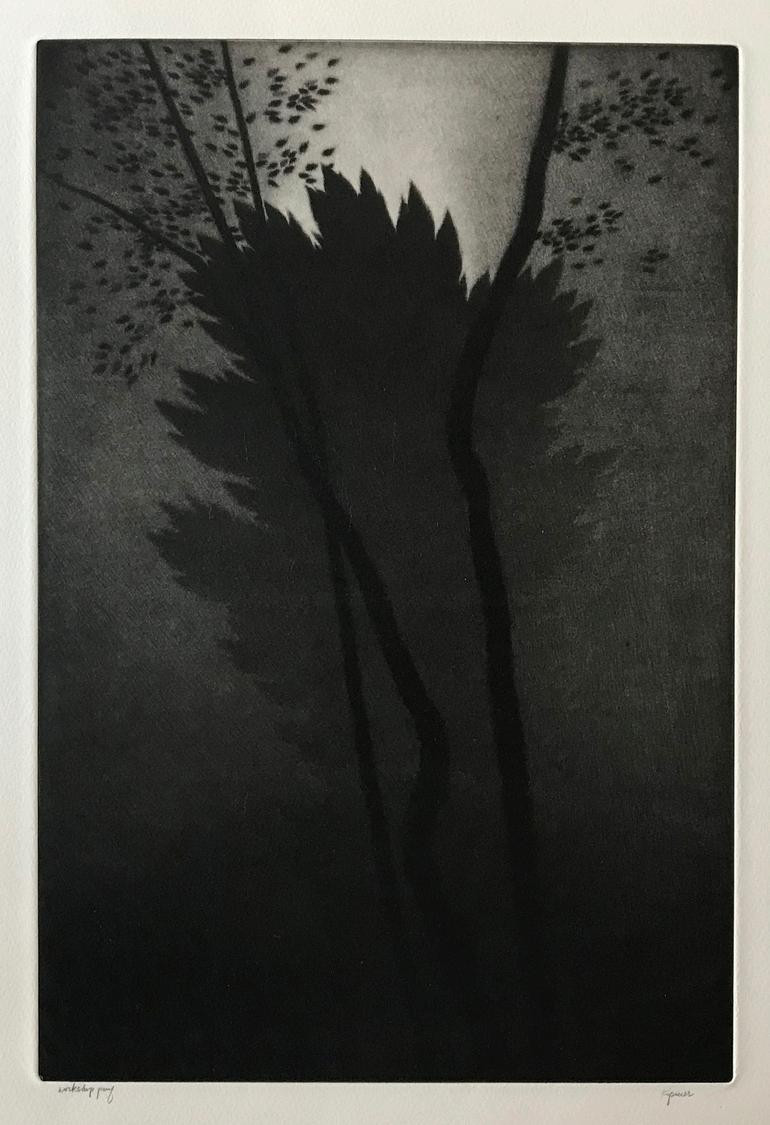
Sentinels II, first state (14/50), 1998
14 x 937 inches
*See public collection inclusions, in appendix
Mezzotint

Landscape w/ curtains & crooked tree (10/15), 2016
195 x 195 inches
Mezzotint
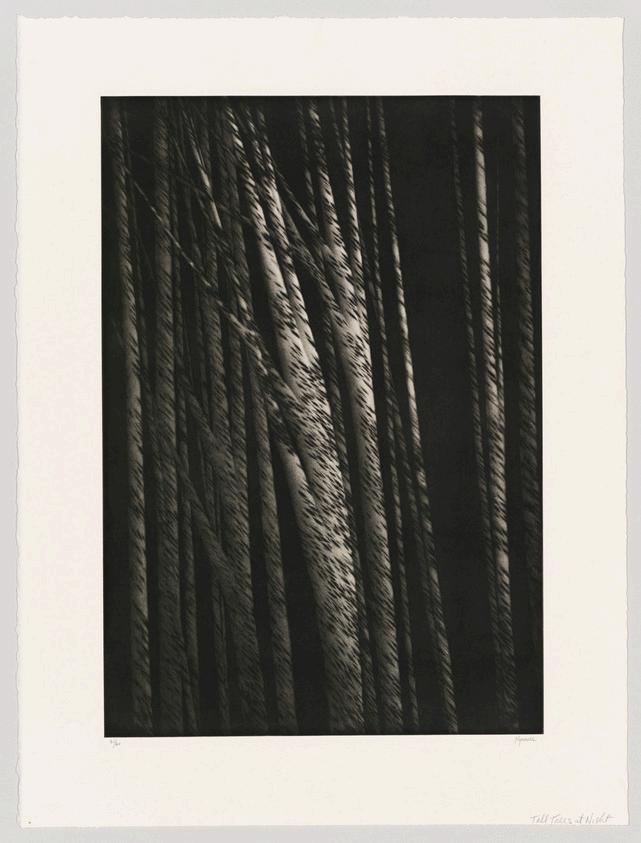
1962 x 135 inches
*See public collection inclusions, in appendix
Tall trees at night (23/60), 2001
Mezzotint
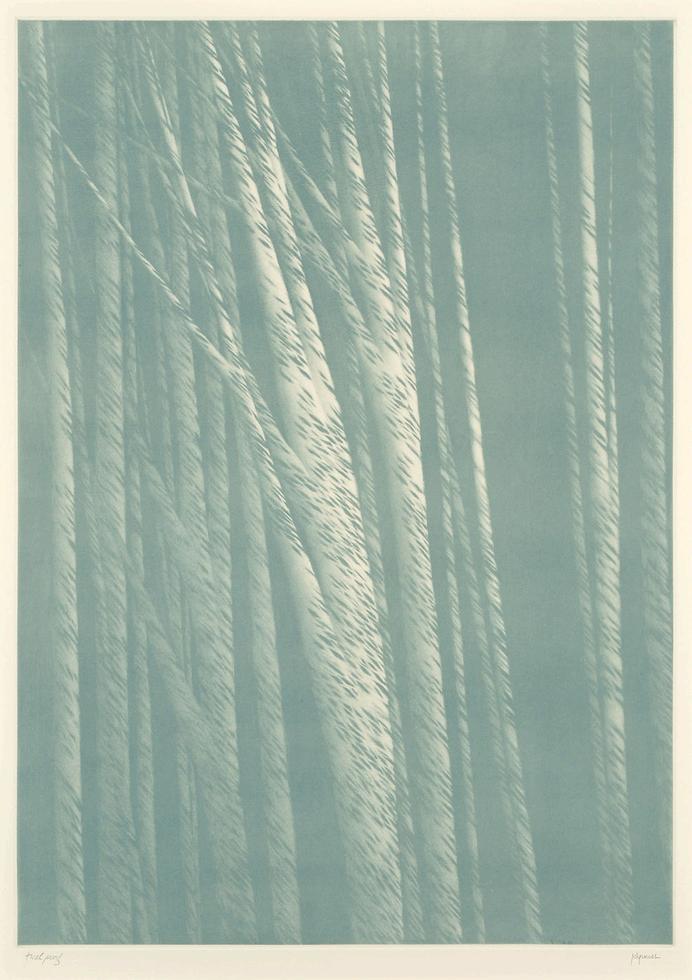
Tall trees at night (Green trial proof 1/2), 2009
Mezzotint 1962 x 135 inches
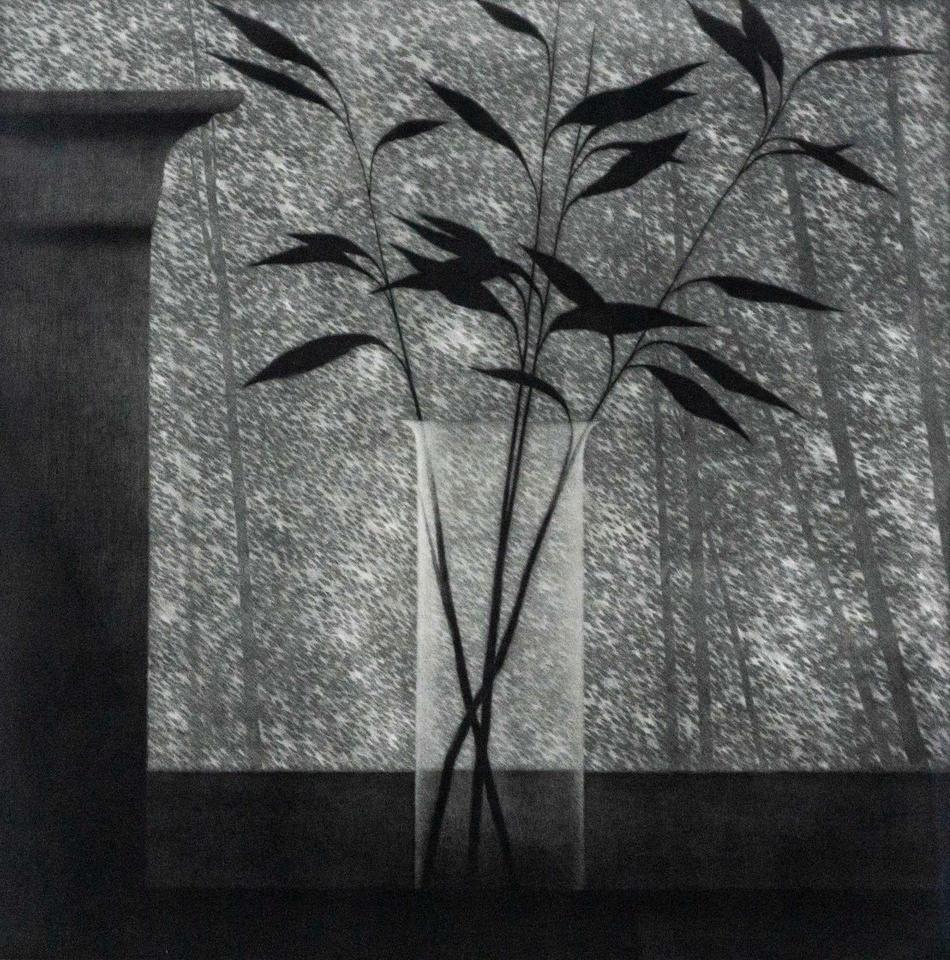
Window w/ vase & forest (Proof 3), 2000
1962 x 1937 inches
*See public collection inclusions, in appendix
Mezzotint

The white forest (58/60), 2000
2375 x 1775 inches
*See public collection inclusions, in appendix
Mezzotint

195 x 155 inches
*See public collection inclusions, in appendix
Two vases (Proof IV/XIII), 2004
Mezzotint

Vase w/ small branches (4/50), 1999
14 x 937 inches
*See public collection inclusions, in appendix
Mezzotint

Three birches (1/25), 2019
Drypoint etching
85 x 475 inches
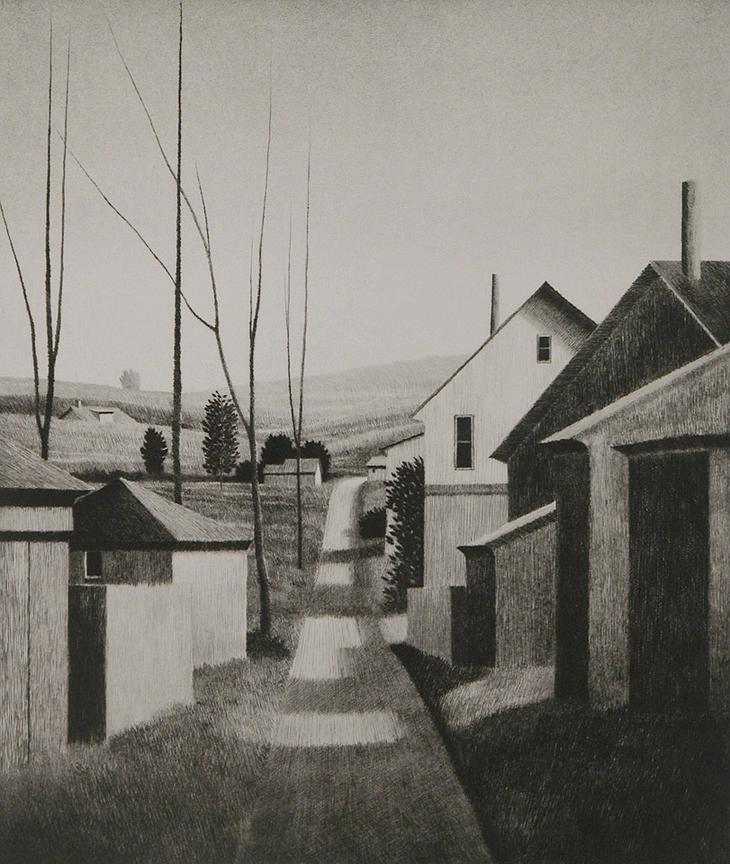
Springfield O (Variant, proof 1), 1992
Drypoint etching 13 x 11 inches
*See public collection inclusions, in appendix

STONE LITHOGRAPHS
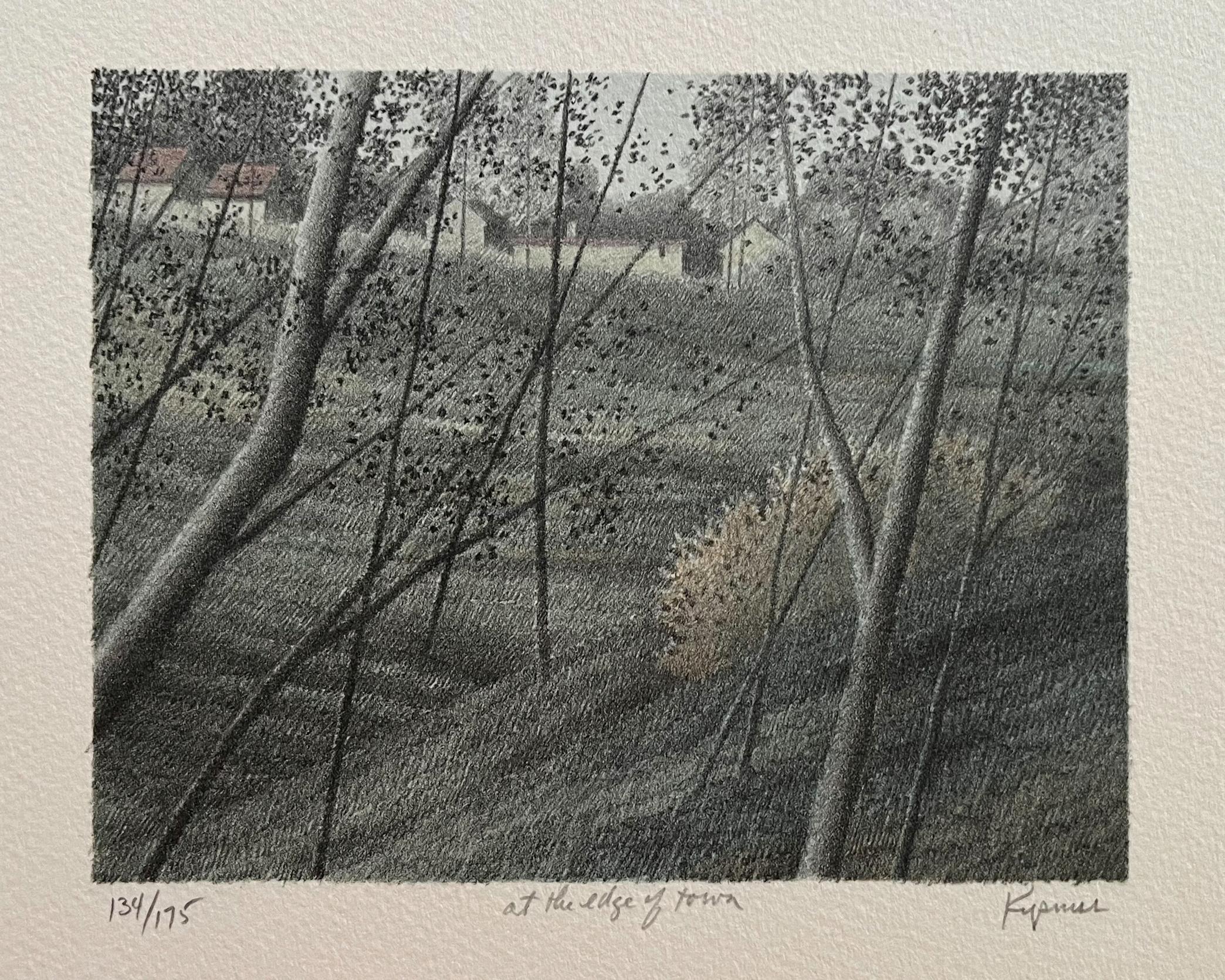
Stone lithography is a printmaking technique that relies on the principle of oil and water repulsion to create an image on a smooth limestone surface The artist draws directly onto the stone using a greasy pencil, crayon, or ink, which adheres to the lithographic surface In color lithography, multiple stones are used to create a single print, with each one dedicated to one specific color in the final image Once the drawing is complete, the stones are treated with a chemical solution that bonds the greasy image to the stone while making the non-image areas receptive to water Each stone is then moistened with water, which is absorbed by the non-image areas, and an oil-based ink is applied with rollers The ink sticks only to the greasy drawing and is repelled by the wetted areas The stones are then pressed onto dampened paper using a lithographic press. Because the color inks are applied to each separate stone, the paper must be pressed by each one, in the correct color sequence, building the final image layer by layer.
Original fine art lithography is a specialized printmaking technique that grants a high degree of artistic control and demands the artist’s direct engagement with the medium. The term “lithography” is often mistaken for the process of “mechanical lithography” which is a practice of reproducing existing artworks, illustrations or photographs for mass distribution Mechanical lithography involves pre-made plates or photographic processes that can produce multiple identical copies, which are more suited for commercial reproduction than for the creation of unique, expressive artworks

Hillside w/ porch & moon (Proof 1), 1994
Color lithograph
6 x 5125 inches
*See public collection inclusions, in appendix

Green shadows II (Proof 2), 1994
Color lithograph
65 x 5 inches
*See public collection inclusions, in appendix

Approaching town or At the edge of town (134/175), 1985
Color lithograph
5 x 6 inches

As the rain ends (67/120), 1987
Color lithograph
10 x 16 inches
*See public collection inclusions, in appendix

green (19/120), 1987
Color lithograph
16 x 12 inches
*See public collection inclusions, in appendix
Green,
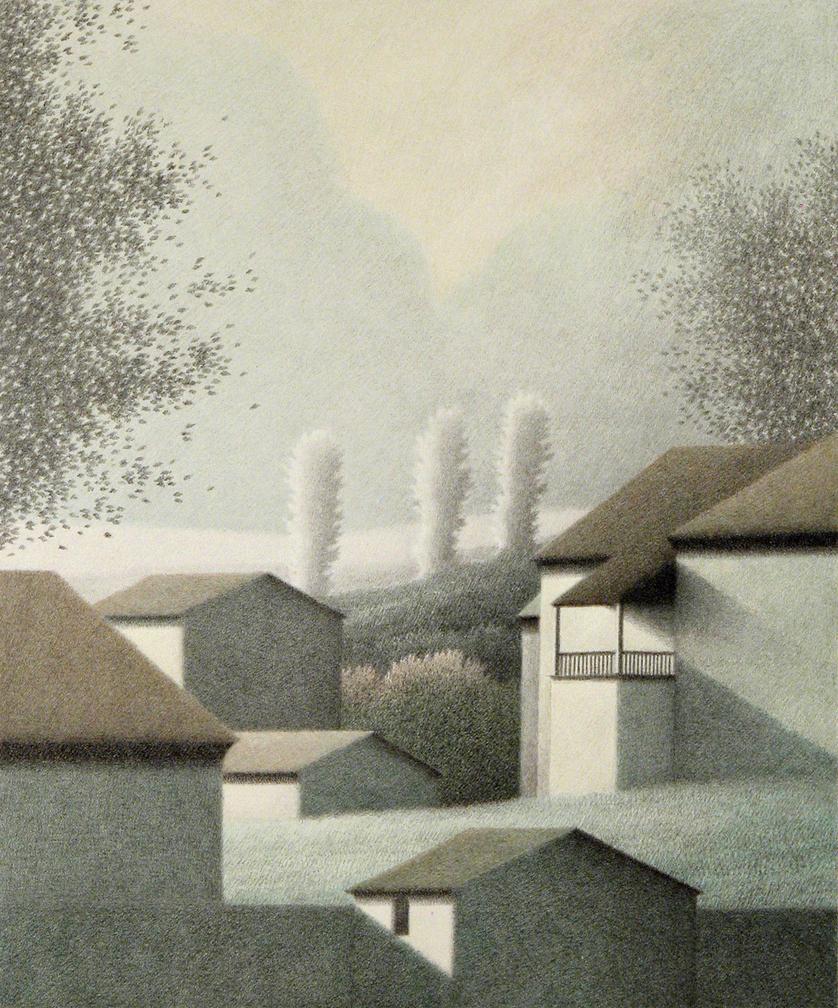
Small porch & clouds (71/120), 1986
Color lithograph 1325 x 11 inches
*See public collection inclusions, in appendix

Pale hedges (53/120), 1988
Color lithograph
16 x 12 inches
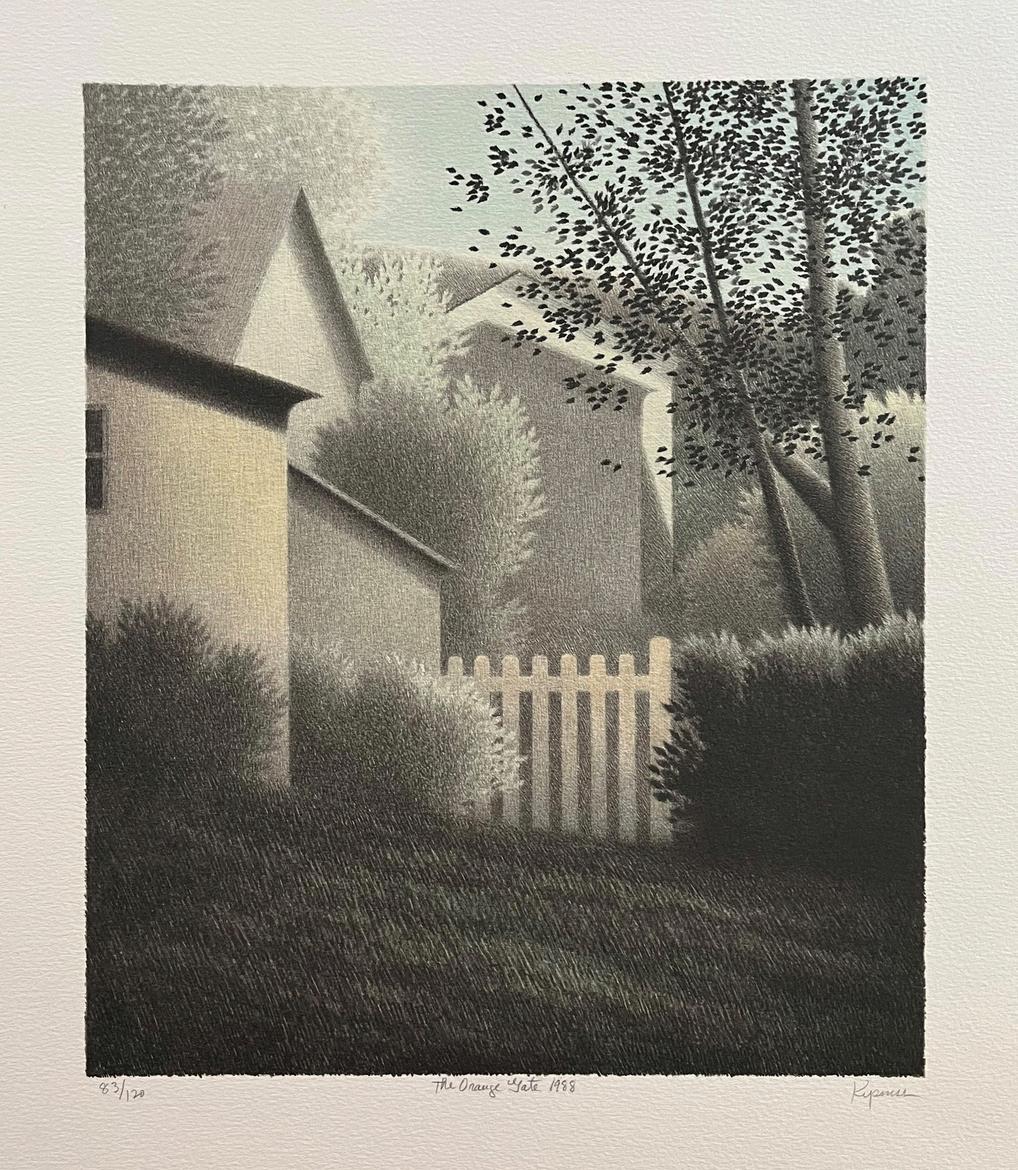
The orange gate (83/120), 1988
Color lithograph
12 x 10 inches
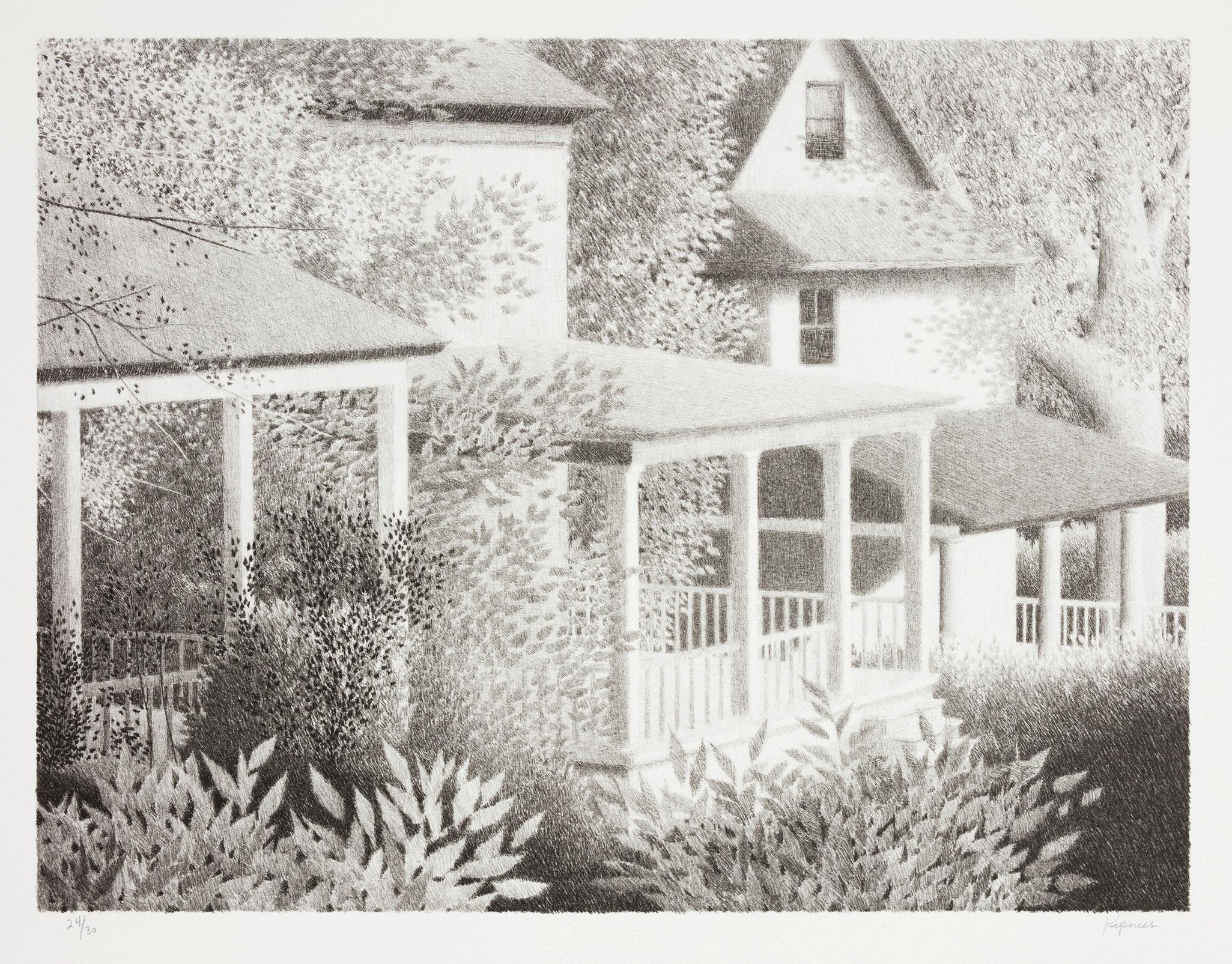
Green porches (Proof 1, 24/30), 1988
Lithograph 1125 x 1475 inches
*See public collection inclusions, in appendix
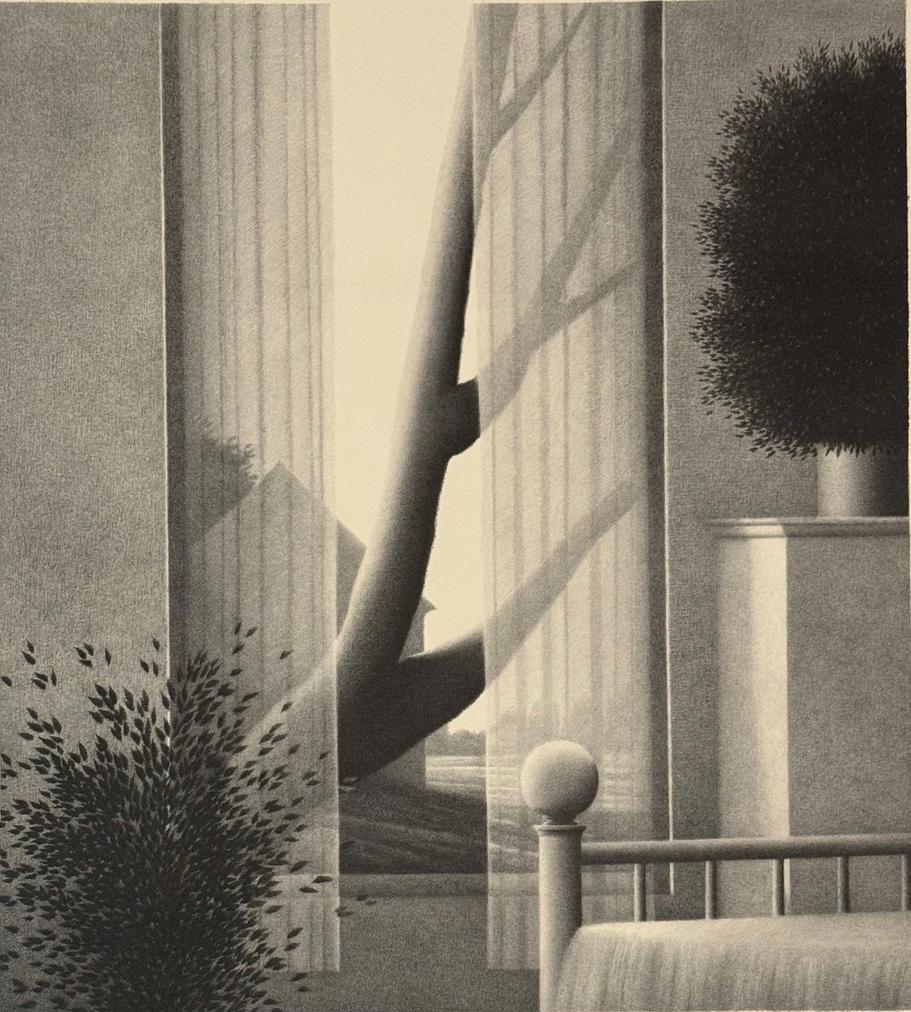
Through bedroom curtains (23/25), 1983
Lithograph 2012 x 18 inches
*See public collection inclusions, in appendix
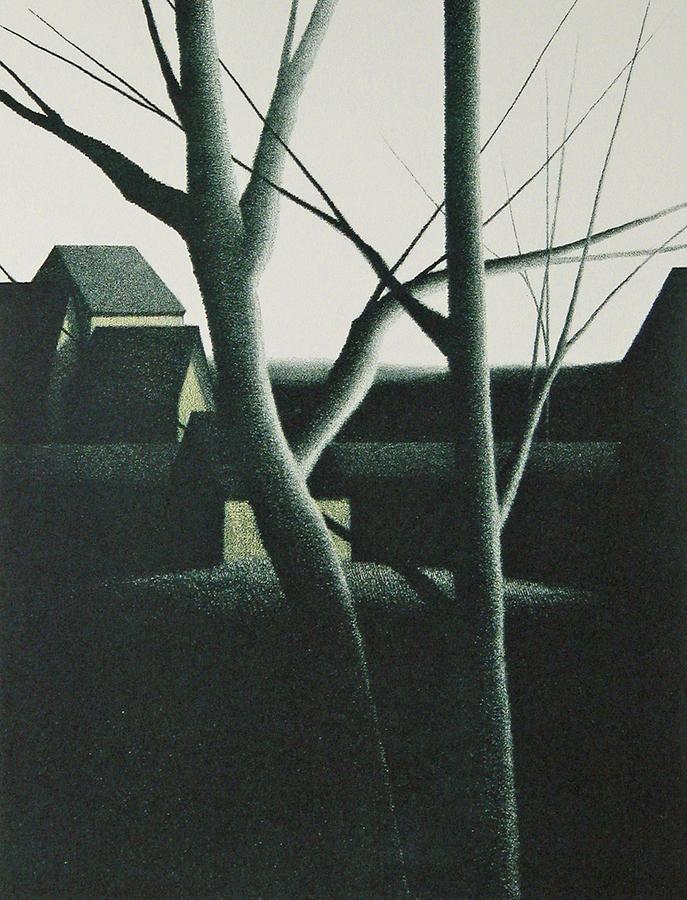
Looking I (67/90), 1975
Color lithograph 13 x 9875 inches
*See public collection inclusions, in appendix

Bare trees (12/90), 1970
Lithograph 1387 x 10 inches
*See public collection inclusions, in appendix
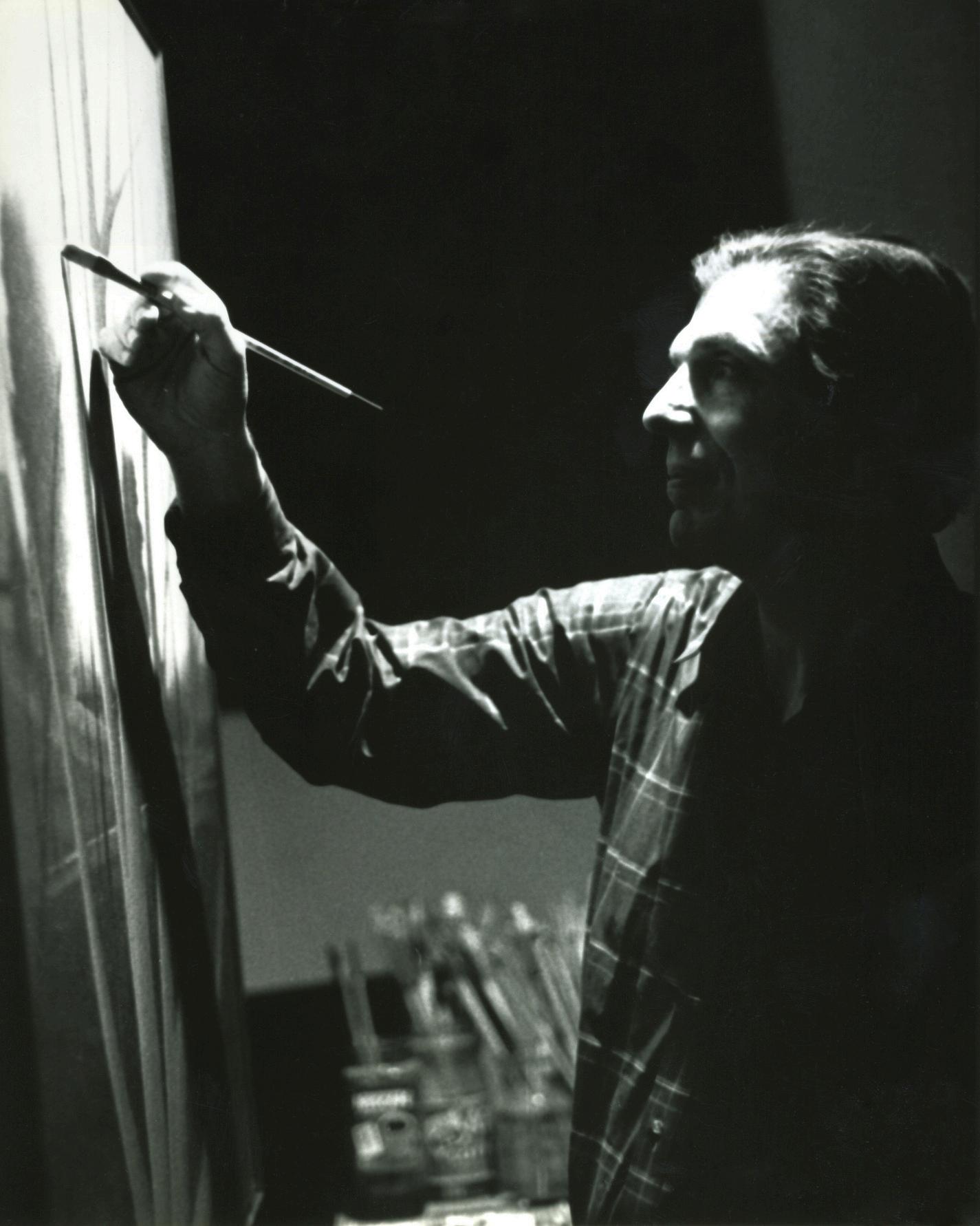
PAINTINGS
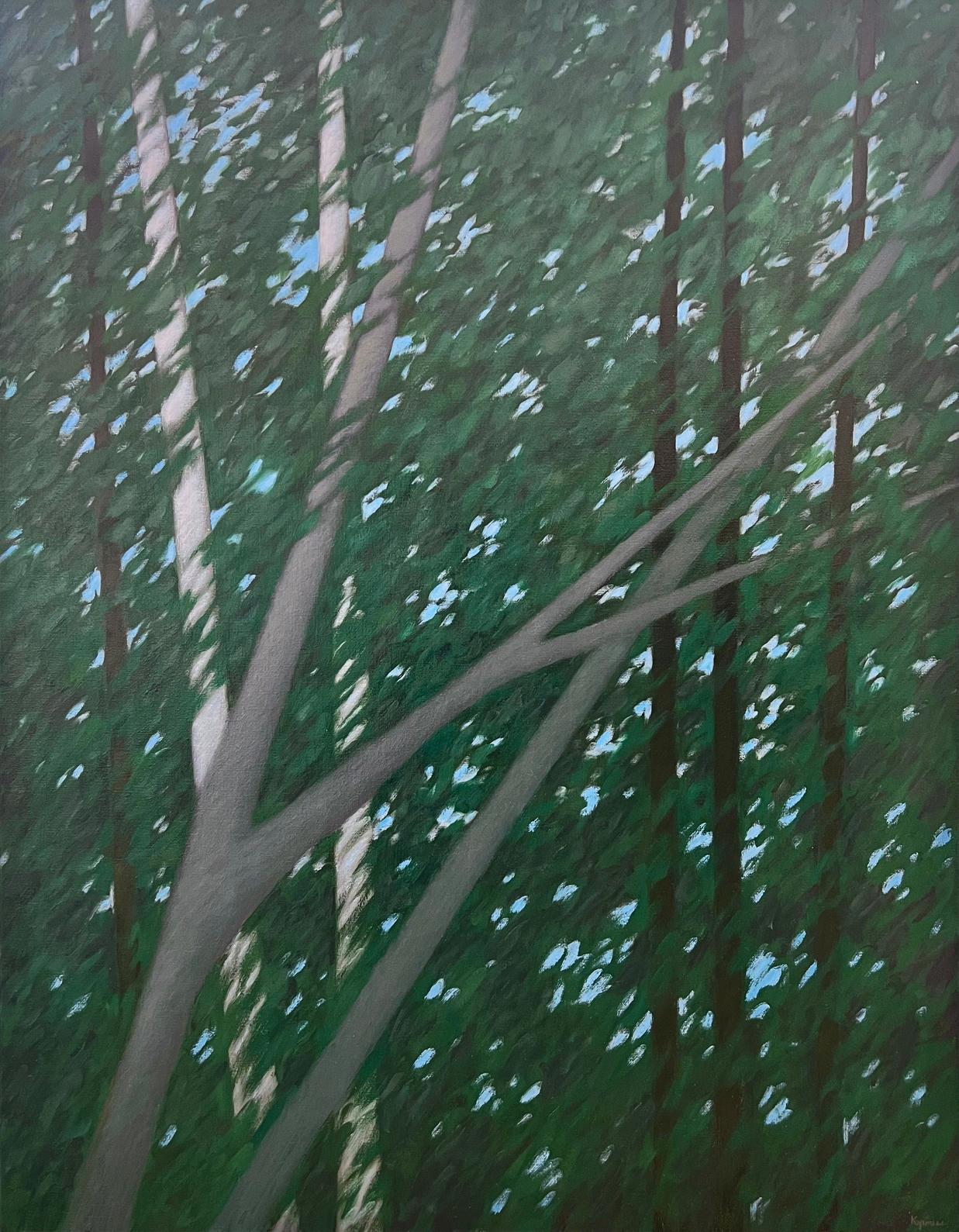
In 1951 Robert Kipniss won a painting competition and was awarded a one-man show in New York City, thus propelling him into a career as an artist Though he eventually became as well known, or even more so, for his printmaking, his foundation was always rooted in painting His process begins with a long period of looking and thinking, as his subjects are largely drawn from imagination and memory Applying his pigments directly from the tube, he generally works in a very restrained palette of only eight colors – raw umber, ivory black, Naples yellow light, terra verte, cobalt green, Windsor green, Windsor blue, and titanium white His preference is to work under artificial light as opposed to daylight, more closely approximating the conditions in which the works will ultimately be viewed and enjoyed
Kipniss usually begins with an underpainting of grey, then starts laying-in the positive shapes with more medium and dark tones. Next he will add lighter tones to define the negative space, alternating between the positive and negative space, dark and light. In this way, his painting process in some ways mimic’s that of mezzotint printmaking, where lightness is pulled from the darker tones

18 x 24 inches
Morning fog, 2014
Oil on canvas
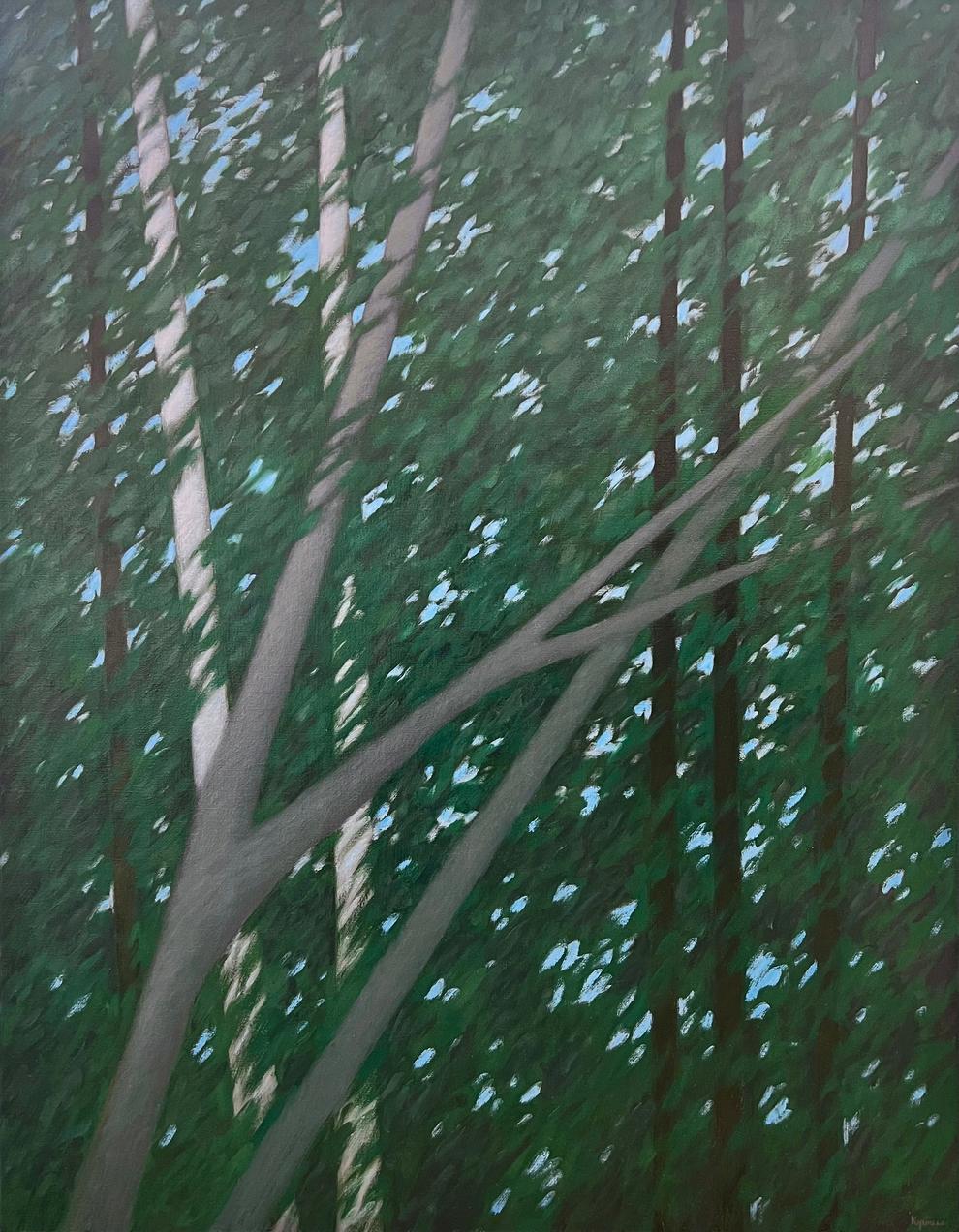
3625
Forest interior w/ white trees, 2013
Oil on canvas
x 2825 inches
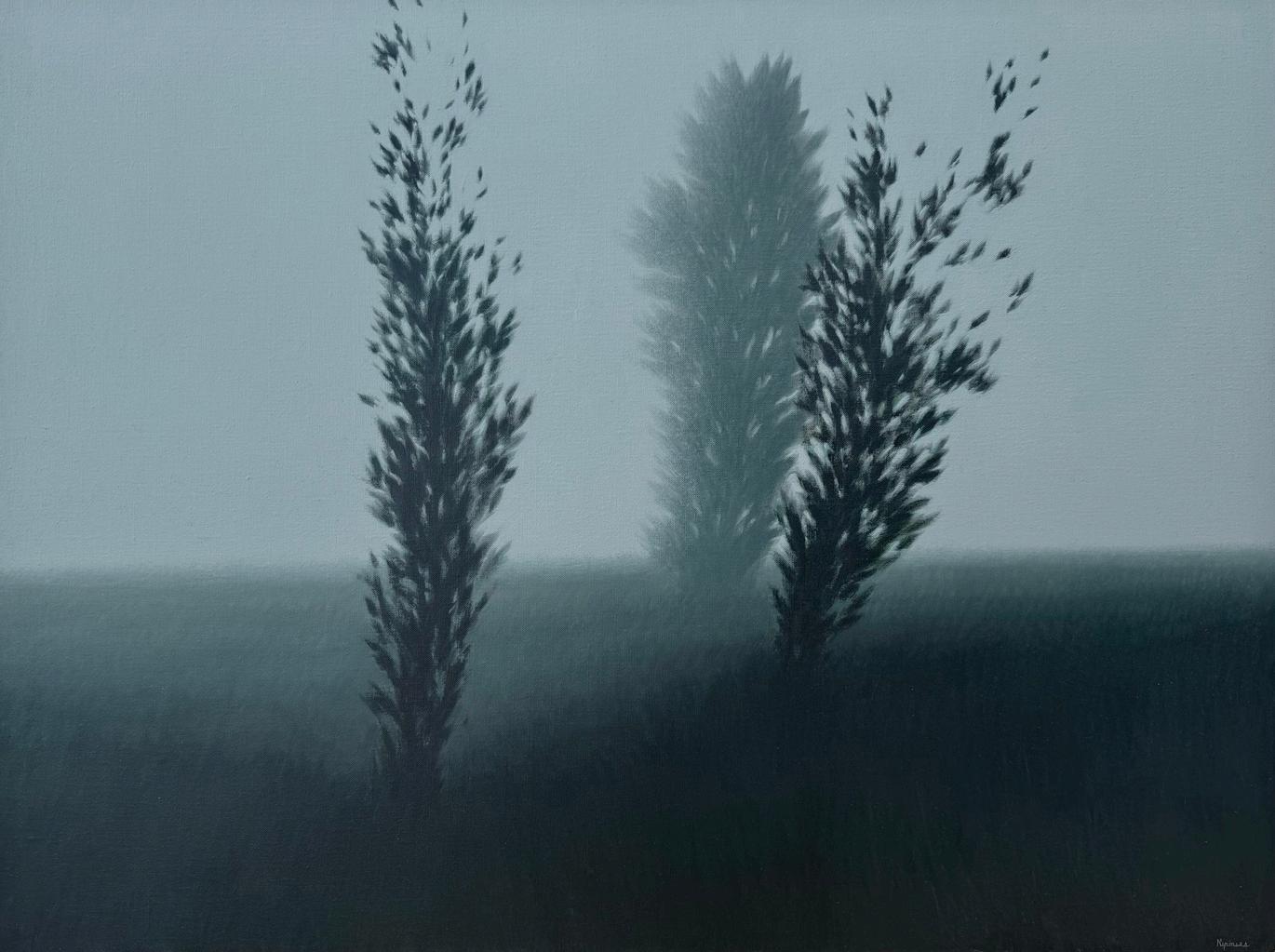
The approach, 2007
Oil on canvas
30 x 40 inches
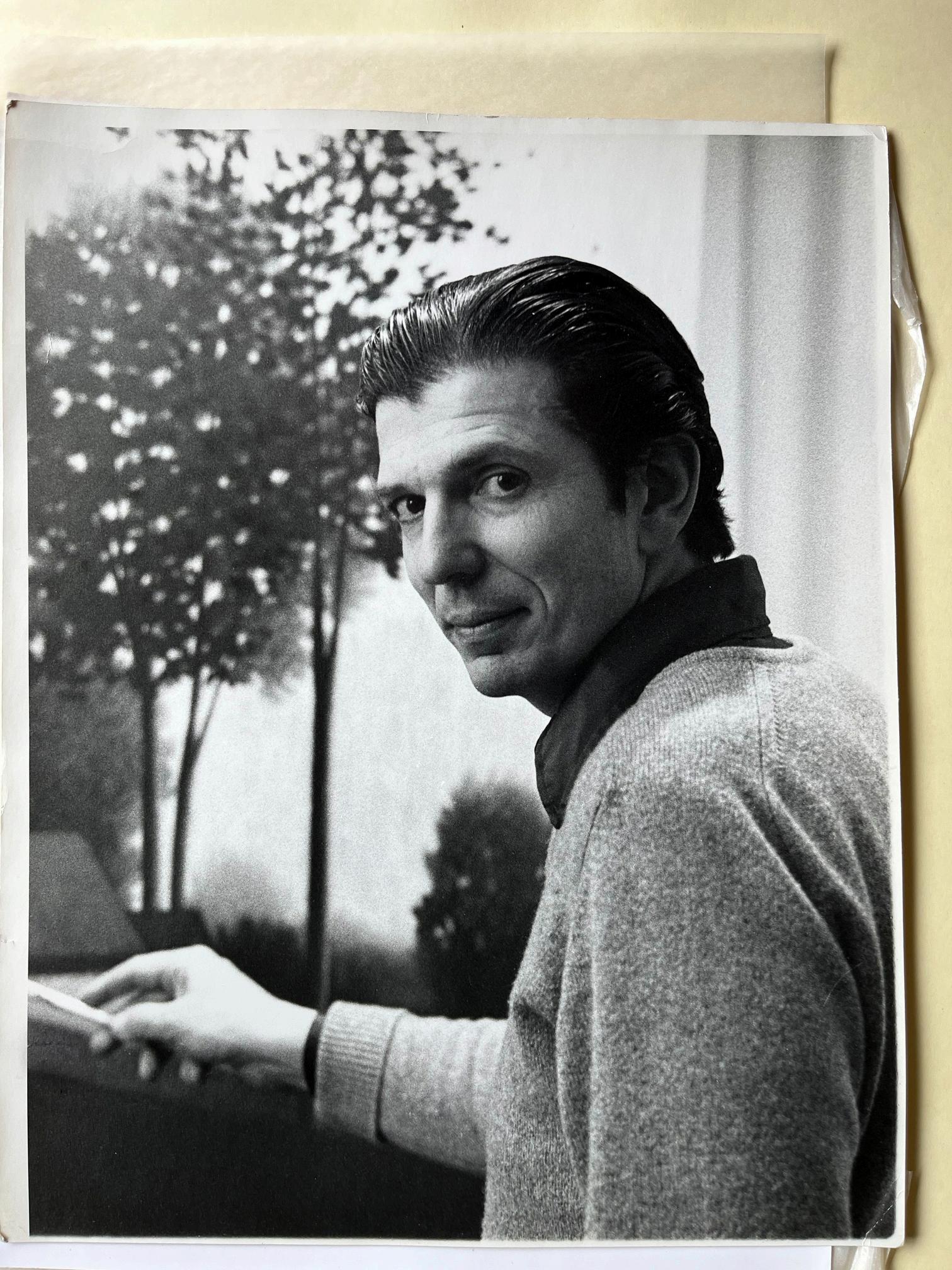
APPENDIX
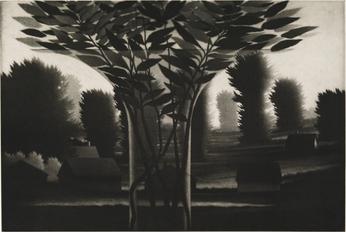
Clear vase & landscape, Mezzotint, 1995
Art Museum of Western Virginia, Roanoke, VA
The British Museum, London, UK
The Butler Institute of American Art, Youngstown, OH
The Century Association, New York, NY
Everson Museum of Art, Syracuse, NY
Iris & B. Gerald Cantor Center for Visual Arts at Stanford University, Stanford, CA
Jane Voorhees Zimmerli Art Museum, Rutgers University, New Brunswick, NJ
Tacoma Art Museum, Tacoma, WA
Whitney Museum of American Art, New York, NY
Wichita Falls Museum and Art Center, Wichita Falls, TX
Wittenberg University, Springfield, OH
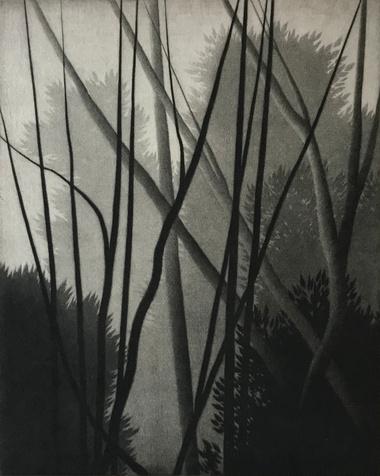
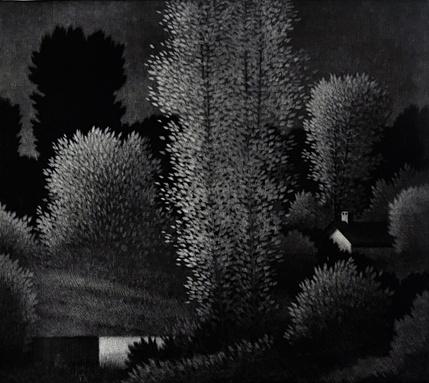

Trees & trees, Mezzotint, 1997
Cleveland Museum of Art, Cleveland, OH
The Brooklyn Museum of Art, Brooklyn, NY
Nocturne I, Mezzotint, 1991
Syracuse University Art Museum, Syracuse, NY
Wittenberg University, Springfield, OH
Moonrise & sunset, Mezzotint, 2013
Syracuse University Art Museum, Syracuse, NY
Yale University Art Gallery, New Haven, CT
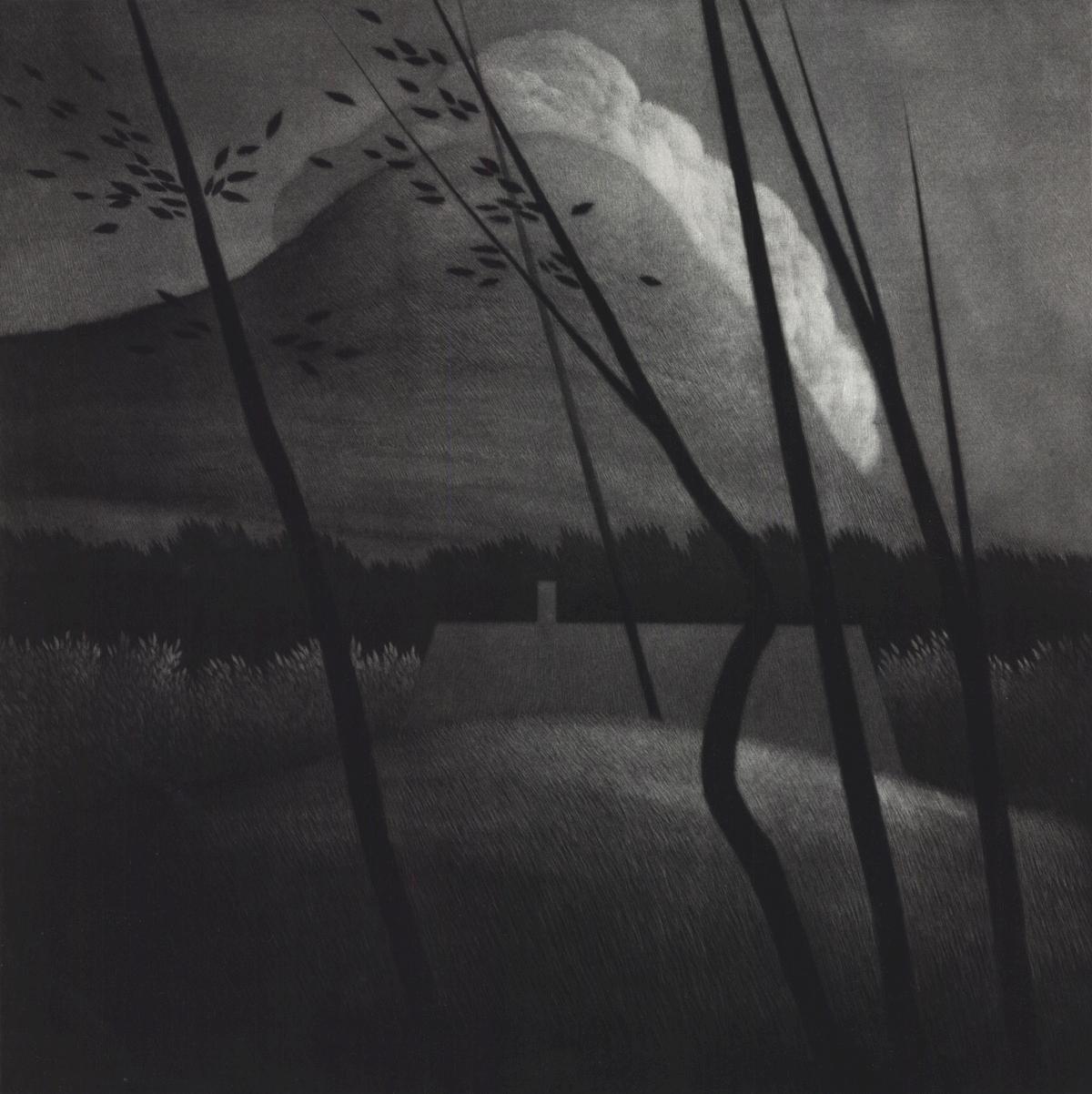
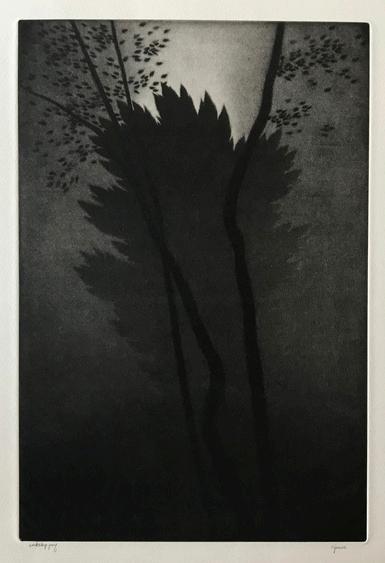

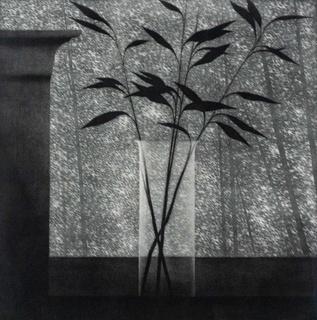
Camelback mountain & cloud, Mezzotint, 2008
Syracuse University Art Museum, Syracuse, NY
Sentinels II, Mezzotint, 1998
The Butler Institute of American Art, Youngstown, OH
Jane Voorhees Zimmerli Art Museum, Rutgers University, New Brunswick, NJ
Wellesley College, Wellesley, MA
Wittenberg University, Springfield, OH
(This exact impression hung in New Orleans Museum of Art during their “Seen in Solitude” exhibition in 2006)
Tall trees at night, Mezzotint, 2001
Achenbach Foundation for Graphic Arts, Palace of the Legion of Honor, San Francisco, CA
The British Museum, London, UK
New Orleans Museum of Art, New Orleans, LA
The New York Public Library, Print Collection, New York, NY
Victoria and Albert Museum, London, UK
Whitney Museum of American Art, New York, NY
Window w/ vase & forest, Mezzotint, 2000
Achenbach Foundation for Graphic Arts, Palace of the Legion of Honor, San Francisco, CA
Carnegie Museum of Art, Pittsburg, PA
Iris & B. Gerald Cantor Center for Visual Arts at Stanford University, Stanford, CA
The Metropolitan Museum of Art, New York, NY
New Orleans Museum of Art, New Orleans, LA

The white forest, Mezzotint, 2000
Achenbach Foundation for Graphic Arts, Palace of the Legion of Honor, San Francisco, CA
The British Museum, London, UK
Carnegie Museum of Art, Pittsburg, PA
Museum of Fine Arts, Boston, MA
Museum of Art Rhode Island School of Design, Providence, RI
The Nelson-Atkins Museum of Art, Kansas City, MO
New Orleans Museum of Art, New Orleans, LA
Whitney Museum of American Art, New York, NY
Wittenberg University, Springfield, OH



Two vases, Mezzotint, 2004
The Metropolitan Museum of Art, New York, NY
Vase w/ small branches, Mezzotint, 1999
The British Museum, London, UK
Springfield Art Museum, Springfield, MO
Jane Voorhees Zimmerli Art Museum, Rutgers University, New Brunswick, NJ
Wittenberg University, Springfield, OH
Springfield, O., Drypoint etching, 1992
The British Museum, London, UK
The New York Public Library, Print Collection, New York, NY
Wichita Falls Museum and Art Center, Wichita Falls, TX
Yale University Art Gallery, New Haven, CT
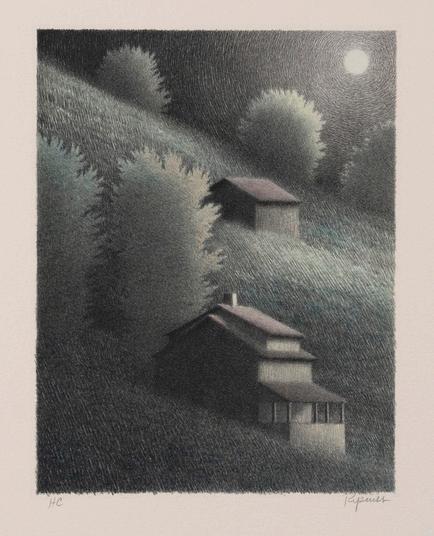
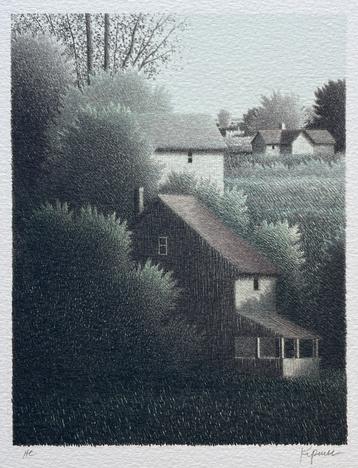



Hillside w/ porch & moon, Color lithograph, 1994
Syracuse University Art Museum, Syracuse, NY
Green shadows II, Color lithograph, 1994
Syracuse University Art Museum, Syracuse, NY
As the rain ends, Color lithograph, 1987
The British Museum, London, UK
Syracuse University Art Museum, Syracuse, NY
Wittenberg University, Springfield, OH
Green, green, Color lithograph, 1987
Wittenberg University, Springfield, OH
Green porches, Lithograph, 1988
Syracuse University Art Museum, Syracuse, NY
Wittenberg University, Springfield, OH


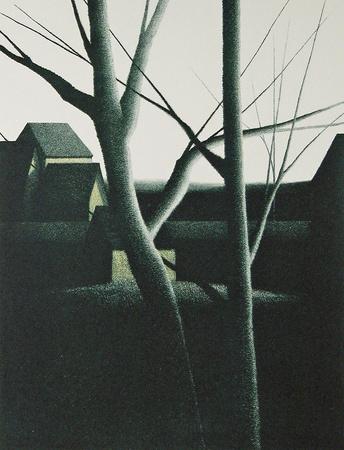

Small porch & clouds, Color lithograph, 1986
Syracuse University Art Museum, Syracuse, NY
Wittenberg University, Springfield, OH
Through bedroom curtains, Lithograph, 1983
Springfield Art Museum, Springfield, MO
Looking I, Color lithograph, 1975
Allentown Art Museum, Allentown, PA
Syracuse University Art Museum, Syracuse, NY
Wittenberg University, Springfield, OH
Bare trees, Lithograph, 1970
The British Museum, London, UK
Allentown Art Museum, Allentown, PA
(This exact impression hung in New Orleans Museum of Art during their “Seen in Solitude” exhibition in 2006)
Selected Public Collections
Achenbach Foundation for Graphic Arts, Palace of the Legion of Honor, San Francisco, California
Albright-Knox Art Gallery, Buffalo, New York
Allentown Art Museum, Allentown, Pennsylvania
Arkansas State University Permanent Collection, Jonesboro, Arkansas
The Art Institute of Chicago, Chicago, Illinois
Art Museum of Western Virginia, Roanoke, Virginia
Art Students League of New York, New York, New York
Ball State University, Muncie, Indiana
Bates College Museum of Art, Lewiston, Maine
Bibliotheque Nationale de France, Paris, France
Bodleian Library, Oxford University, Oxford, UK
The British Museum, London, UK
Brooklyn Museum of Art, Brooklyn, New York
The Butler Institute of American Art, Youngstown, Ohio
Canton Art Institute, Canton, Ohio
Carnegie Museum of Art, Pittsburgh, Pennsylvania
The Century Association, New York, New York
The Cleveland Museum of Art, Cleveland, Ohio
Davis Museum and Cultural Center, Wellesley College, Wellesley, Massachusetts
De Cordova Museum and Sculpture Park, Lincoln, Massachusetts
Denver Art Museum, Denver, Colorado
The Detroit Institute of Arts, Detroit, Michigan
Dubuque Museum of Art, Dubuque, lowa
Elvehjem Museum of Art, University of Wisconsin-Madison, Wisconsin
Everson Museum of Art, Syracuse, New York
Fitzwilliam Museum, University of Cambridge, Cambridge, UK
Flint Institute of Arts, Flint, Michigan
Frederick R Weisman Art Museum, University of Minnesota, Minneapolis, Minnesota
Gibbes Museum of Art, Charleston, South Carolina
Harvard University Art Museums, Cambridge, Massachusetts
The Herbert F Johnson Museum of Art, Cornell University, Ithaca, New York
Indianapolis Museum of Art, Indianapolis, Indiana
Iris & B Gerald Cantor Center for Visual Arts at Stanford University, Stanford, California
Jane Voorhees Zimmerli Art Museum, Rutgers University, New Brunswick, New Jersey
Lakeview Museum of Arts and Sciences, Peoria, Illinois
Library of Congress, Washington, DC
Los Angeles County Museum of Art, Los Angeles, California
The Marion Koogler McNay Art Museum, San Antonio, Texas
The Metropolitan Museum of Art, New York, New York
Miami University Art Museum, Oxford, Ohio
Minnesota Museum of American Art, Saint Paul, Minnesota
Mint Museum of Art, Charlotte, North Carolina
Mississippi Museum of Art, Jackson, Mississippi
Museo de Arte Moderno La Tertulia, Cali, Colombia
Museum of Art, Rhode Island School of Design, Providence, Rhode Island
Museum of Fine Arts, Boston, Massachusetts
The Museum of Fine Arts, Houston, Texas
National Academy of Design, New York, New York
National Museum of American Art, Washington, DC
The Nelson-Atkins Museum of Art, Kansas City, Missouri
New Orleans Museum of Art, New Orleans, Louisiana
The New York Public Library, Print Collection, New York, New York
Notre Dame University, South Bend, Indiana
Ohio University, Athens, Ohio
Orlando Museum of Art, Orlando, Florida
Pennsylvania State University Library Collection, Centre County, Pennsylvania
Philadelphia Museum of Art, Philadelphia, Pennsylvania
Pinakothek der Moderne, Staatliche Graphische Sammlung, Munich, Germany
Portland Art Museum, Portland, Oregon
Print Club of Albany, Albany, New York
Royal Society of Painter-Printmakers, London, UK
Society of American Graphic Artists (SAGA), New York, New York
Southern Alleghenies Museum of Art, Loretto, Pennsylvania
Springfield Art Museum, Springfield, Missouri
Springfield Museum of Art, Springfield, Ohio
Tacoma Art Museum, Tacoma, Washington
Victoria and Albert Museum, London, UK
Virginia Museum of Fine Arts, Richmond, Virginia
Wellesley College, Wellesley, Massachusetts
Whitney Museum of American Art, New York, New York
Wichita Falls Museum and Art Center, Wichita Falls, Texas
Wittenberg University, Springfield, Ohio
Yale University Art Gallery, New Haven, Connecticut
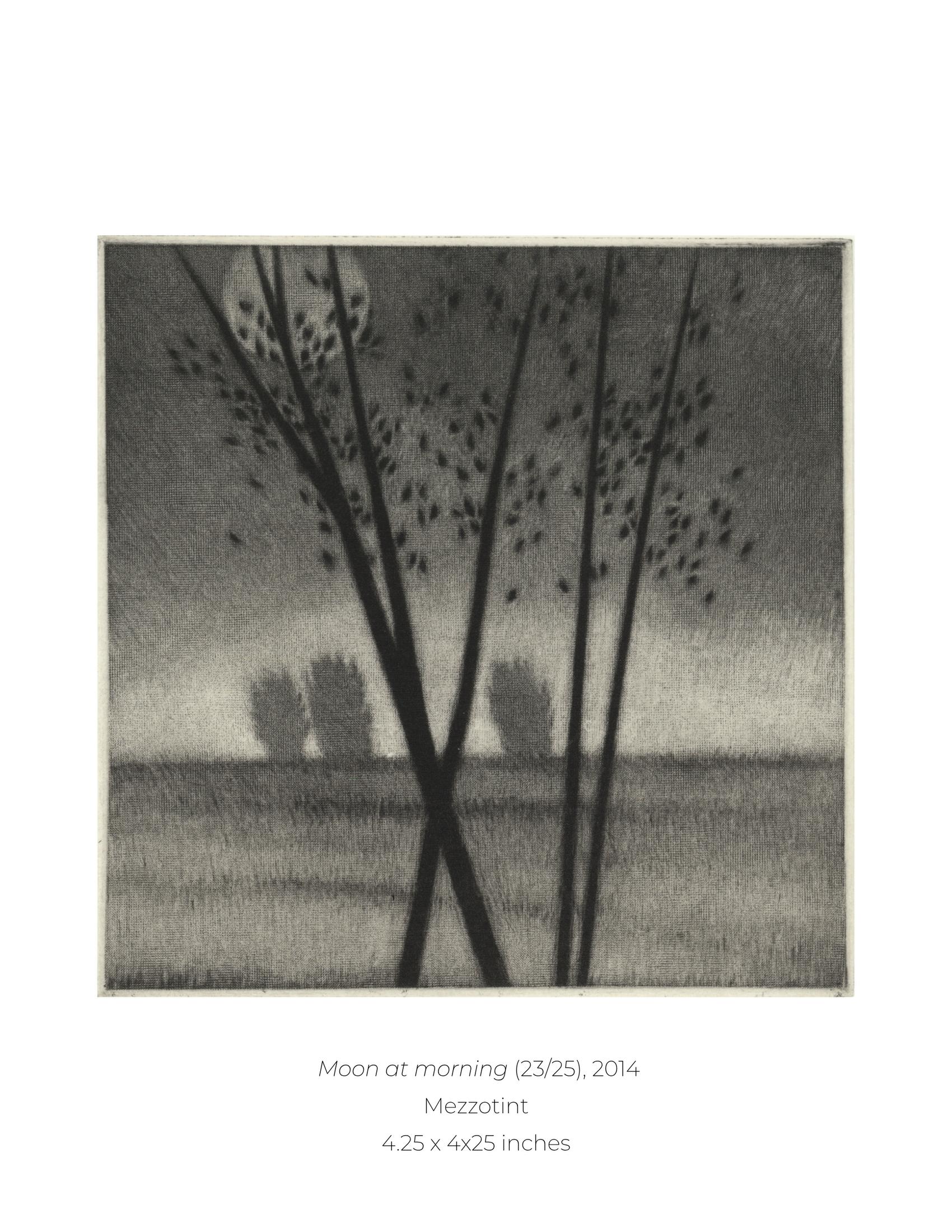
A Late Walk
When I go up through the mowing field, The headless aftermath, Smooth-laid like thatch with the heavy dew,
Half closes the garden path. And when I come to the garden ground, The whir of sober birds
Up from the tangle of withered weeds Is sadder than any words.
A tree beside the wall stands bare, But a leaf that lingered brown, Disturbed, I doubt not, by my thought, Comes softly rattling down.
I end not far from my going forth By picking the faded blue
Of the last remaining aster flower To carry again to you.
– Robert Frost

